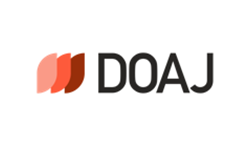ПОСТКРИЗОВА ГЛОБАЛЬНА МОНЕТАРНА НЕСТАБІЛЬНІСТЬ
Ключові слова:
Глобальна монетарна нестабільність, валютні резерви, валютні курси, глобальна ліквідність, ринок активів, центральні банки.Анотація
Подолання глобальної фінансової кризи загрожує перерости в посилення глобальної монетарної нестабільності. На відміну від попередніх випадків глобальних монетарних стресів, сучасний період характеризується кризовими процесами довкола системи резервних активів та інфляційних наслідків поведінки фінансових дисбалансів і глобальної ліквідності. Асиметричне відновлення ринків активів у розрізі країн посилює флуктуації у сфері потоків капіталу та валютних курсів, що збільшує попит на валютні резерви і консервує докризові глобальні монетарні взаємини разом із пошуком альтернативних варіантів деномінації зовнішніх активів країни. Внаслідок того, що монетарні акції не переростають у чистому вигляді у глобальний попит, що реанімує реальний випуск, глобальна економіка опиняється у стані стагфляційної пастки. Вихід з неї повинен супроводжуватись посиленням міжнародної координації монетарної політики задля посилення контролю за поведінкою глобальної ліквідності.
Посилання
Report of the Commission of Experts of the President of the United Nations General Assembly on Reforms of the International Monetary and Financial System. – UN. – 2009. // www.un.org.
Козюк В. В. Монетарні засади глобальної фінансової стабільності. – Тернопіль: ТНЕУ, Економічна думка, 2009. – 728 с.
Aizenman J. Large Hoarding of International Reserves and the Emerging Global Economic Architecture // NBER Working paper. – 2007. – № 13277. – Р. 3–19.; Caballero R. On the Macroeconomics of Assets Shortages // NBER Working Paper. – 2006. – № 11996. – Р. 1–24.
Schnabl G., Freitag S. Reverse Causality in Global Current Accounts // ECB Working Paper. – 2010. – № 1208. – Р. 1–34.
Borio C. Ten Propositions about Liquidity Crises // BIS Working Paper. – 2009. – № 293. – Р. 1-21.
Macroprudential Policy Tools and Frameworks. Update to G20 Finance Ministers and Central Bank Governors. – BIS, 2011. – P. 1-13.
Gagnon J. Current Account Imbalances Coming Back // Institute for International Economics Working Paper. – 2011. – WP 11–1. – P. 1–35.
Rebalancing the Global Economy: A Primer for Policymaking / Edited by S. Claessens, S. Evenett, B. Hoekman. – CEPR: A VoxEU.org publication, 2010. – 215 p.
Goldstein M., Weatherstone D. Confronting Asset Bubbles, Too Big to Fail, and Beggar-thy-Neighbor Exchange Rate Policies // Institute for International Economics Policy Brief. – 2010. – PB 10-3. – P. 1–8.
Goldstein M. Integrating Reforms of Financial Regulation with Reform of the International Monetary System // Institute for International Economics Policy Working Paper. – 2011. – WP 11–5. – P. 1–28.
Williamson J. Reference Rates and the International Monetary System. – Wash. (D.C.): Institute for International Economy, 2007. – 104 p.
Williamson J. The Future of the International Monetary System // Global Imbalances and Developing Countries: Remedies for a Failing International Financial System / Ed. By J. J. Teunissen and A. Akkerman. – Amsterdam: Forum on Debt and Development, 2007. – Р. 120–130.
Bergsten F., Truman E. Why Deficits Matter: The International Dimension // IIE Speeches, Testimony, Paper. – 2007. Testimony Before the Budget Committee of the House of Representatives, Jan. 23, 2007. – P. 1–18.
Bergsten F. The IMF and Exchange Rates // IIE Speeches, Testimony, Paper. – 2008. Testimony before the Committee on Banking, Housing and Urban Affairs United States Senate. — Institute for International Economics. – Wash. (D.C.). – Р. 1–10.
Reform of the International Monetary and Financial System. Chapter IV. // Trade and Development Report. – UNCTAD: Geneva, 2009.
Ocampo J.-A. The Instability and Inequities of the Global Reserve System // UN Department of Economic and Social Affairs Working Paper. – 2007. – № 59. – Р. 1–17.
Bracke Th., Fidora M. Global Liquidity Glut or Global Saving Glut? A Structural VAR Approach // ECB Working Paper. – 2008. – № 911. – Р. 5–25.
The US-Sino Currency Dispute: New Insights from Economics, Politics and Law / Edited by S. Evenett . – CEPR: A VoxEU.org publication, 2010. – 231 p.
Cline W., Williamson J. Currency Wars? // Institute for International Economics Policy Brief. – 2010. – PB 10-26. – P. 1–12.
Blanchard O., Milesi-Ferretti G.-M. (Why) Should Current Account Balances Be Reduced // IMF Staff Discussion Note. – 2011. – SDN/11/03. – P. 1–15.
Reform of the International Monetary and Financial System. Chapter IV. // Trade and Development Report. – UNCTAD: Geneva, 2009. – Р. 121–126.
Eichengreen B. Toward A New International Financial Architecture: A Practical Post-Asia Agend. – Wash. D. C.: Institute for International Economy, 1999. – 216 p.
Aizenman J., Lee J. International Reserves: Precautionary vs. Mercantilist Views, Theory and Evidence // IMF Working Paper. – 2005. – wp/05/198. – P. 1–17.
Aizenman J. Large Hoarding of International Reserves and the Emerging Global Economic Architecture // NBER Working paper. – 2007. – № 13277. – Р. 3–19.
Aizenman J., Lee J. Financial Versus Monetary Mercantilism: Long-Run View of Large International Reserves Hoarding // IMF Working Paper. – 2006. – WP/06/280. – P. 1–22.
Козюк В. В. Суверенний попит на активи: індивідуальна раціональність та колективна неефективність // Економіка України. – 2010. – № 2. – С. 48–58.
Fratzscher M. What Explains Global Exchange Rate Movements During The Financial Crisis // ECB Working Paper. – 2009. - №1060. – Р. 1-42.
Cecchetti C. Alternatives to Self-Insurance // BIS Speeches. – 2010. – P. 1–12.
IMF Annual Report. 2010. – IMF. – Wash. (D.C.): 2010. – App. Tabl. 1.2.
Global Prospects and Policies // IMF World Economic Outlook. Chapter 1. – 2011. – April 2011. – Р. 1-65.
Hannoun H. The Expanding Role of Central Banks Since the Crisis: What Are the Limits? // BIS Speeches. – 2010. – P. 1-10.
##submission.downloads##
Опубліковано
Як цитувати
Номер
Розділ
Ліцензія
Автори, які публікуються у цьому журналі, погоджуються з наступними умовами:
- Автори залишають за собою право на авторство своєї роботи та передають журналу право першої публікації цієї роботи на умовах ліцензії Creative Commons Attribution License, котра дозволяє іншим особам вільно розповсюджувати опубліковану роботу з обов'язковим посиланням на авторів оригінальної роботи та першу публікацію роботи у цьому журналі.
- Автори мають право укладати самостійні додаткові угоди щодо неексклюзивного розповсюдження роботи у тому вигляді, в якому вона була опублікована цим журналом (наприклад, розміщувати роботу в електронному сховищі установи або публікувати у складі монографії), за умови збереження посилання на першу публікацію роботи у цьому журналі.
- Політика журналу дозволяє і заохочує розміщення авторами в мережі Інтернет (наприклад, у сховищах установ або на особистих веб-сайтах) рукопису роботи, як до подання цього рукопису до редакції, так і під час його редакційного опрацювання, оскільки це сприяє виникненню продуктивної наукової дискусії та позитивно позначається на оперативності та динаміці цитування опублікованої роботи (див. The Effect of Open Access).








